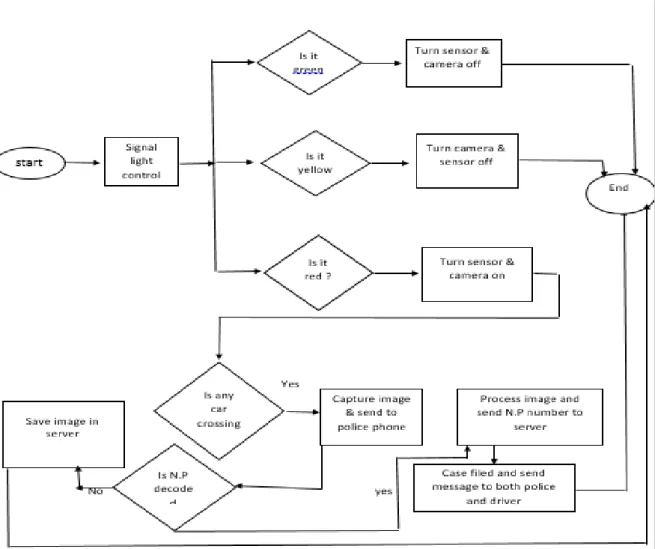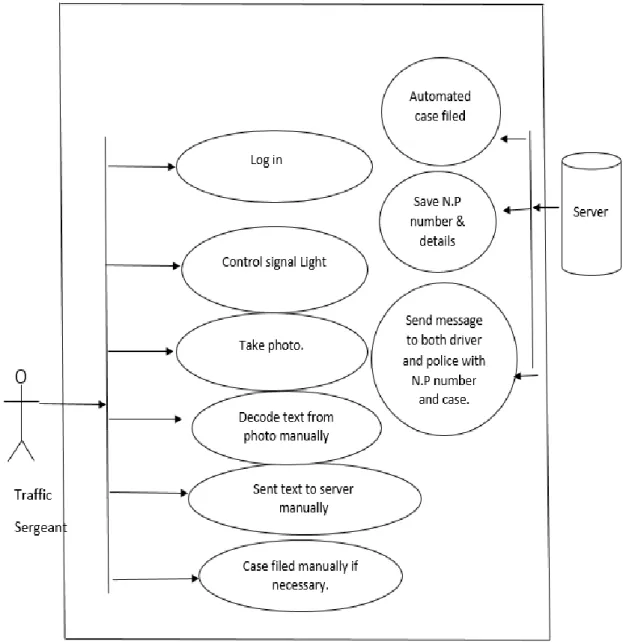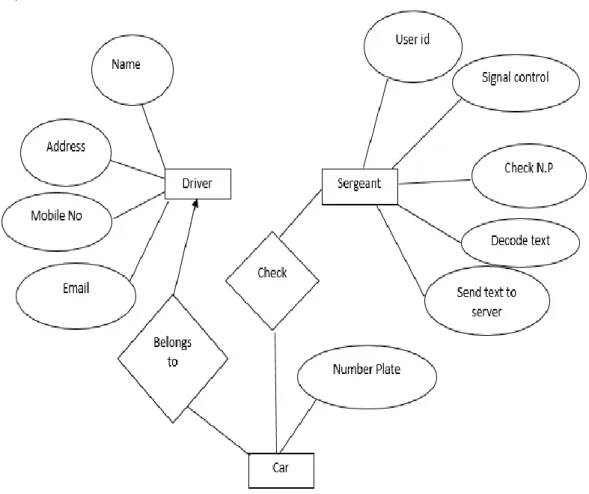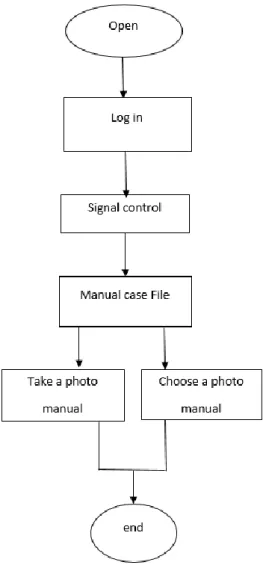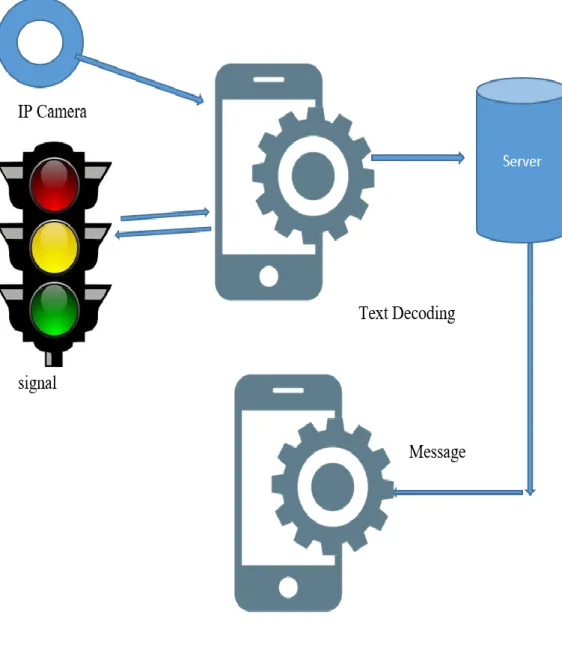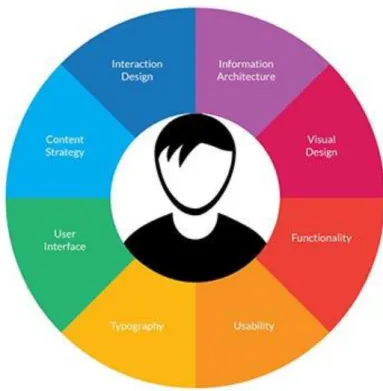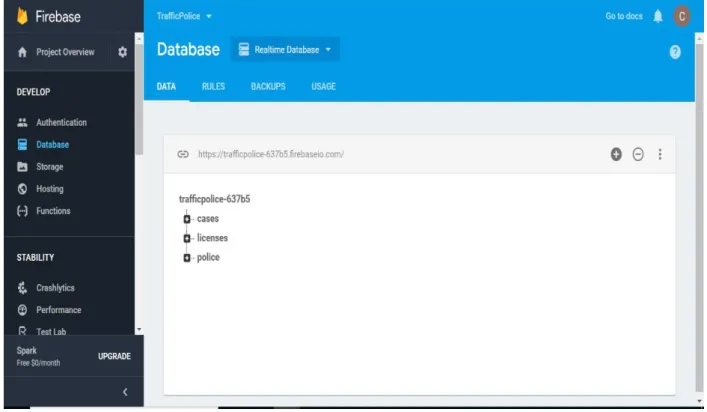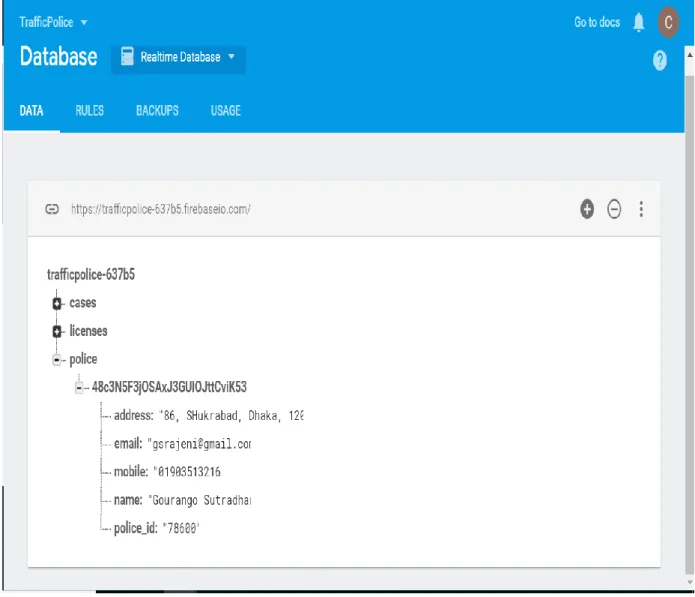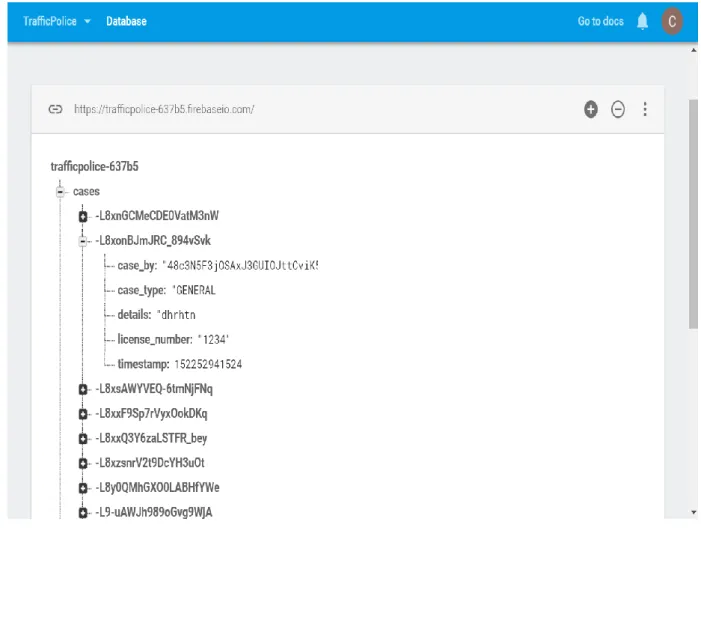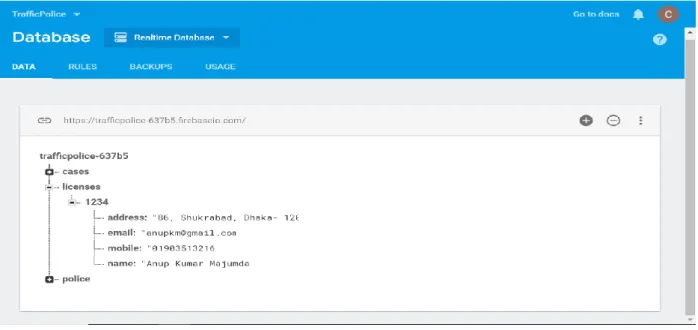BY
Hasibur Rahaman Aman ID: 142-15-3766 Gourango Sutradhar
ID: 142-15-3513 Prosenjit Shikdar
ID: 142-15-3486
This Report Presented in Partial Fulfillment of the Requirements for the Degree of Bachelor of Science in Computer Science and Engineering
Supervised By Anup Majumder
Lecturer
Department of Computer Science and Engineering Daffodil International University
Co-Supervised By Shah Md Tanvir Siddiquee
Lecturer
Department of CSE
Daffodil International University
DAFFODIL INTERNATIONAL UNIVERSITY DHAKA, BANGLADESH
MAY 2018
i
©Daffodil International University
APPROVAL
This Project titled “Implementation of Automated Traffic Crime Control System,”
submitted by Hasibur Rahaman Aman, Gourango Sutradhar, Prosenjit Shikdar from the Department of Computer Science and Engineering, Daffodil International University, has been accepted as satisfactory for the partial fulfillment of the requirements for the degree of Bachelor of Science in Computer Science and Engineering and approved as to its style and contents. The presentation has been held on 6th May 2018.
BOARD OF EXAMINERS
Dr. Syed Akhter Hossain Chairman
Professor and Head
Department of Computer Science and Engineering Faculty of Science & Information Technology DaffodilInternational University
Dr. Sheak Rashed Haider Noori Internal Examiner
Associate Professor and Associate Head
Department of Computer Science and Engineering Faculty of Science & Information Technology Daffodil International University
Md. Zahid Hasan Internal Examiner
Assistant Professor
Department of Computer Science and Engineering Faculty of Science & Information Technology Daffodil International University
Dr. Mohammad Shorif Uddin External Examiner
Professor
Department of Computer Science and Engineering Jahangirnagar University
ii
©Daffodil International University
DECLARATION
We hereby declare that, this project has been done by us under the supervision of Anup Majumder, Lecturer, Department of CSE Daffodil International University. We also declare that neither this project nor any part of this project has been submitted elsewhere for award of any degree or diploma.
Supervised by:
Anup Majumder Lecturer
Department of Computer Science and Engineering Daffodil International University
Co-Supervised by:
Shah Md Tanvir Siddiquee Senior Lecturer
Department of Computer Science and Engineering Daffodil International University
Submitted by:
Hasibur Rahaman Aman ID: -142-15-3766
Department of Computer Science and Engineering DaffodilInternational University
Gourango Sutradhar ID: -142-15-3513
Department of Computer Science and Engineering Daffodil International University
Prosenjit Shikdar ID: -142-15-3486
Department of Computer Science and Engineering Daffodil International University
iii
©Daffodil International University
ACKNOWLEDGEMENT
First, we express our heartiest thanks and gratefulness to almighty God for His divine blessing makes us possible to complete the final year project successfully.
We really grateful and wish our profound our indebtedness to Anup Majumder, Lecturer, Department of CSE Daffodil International University, Dhaka. Deep Knowledge & keen interest of our supervisor in the field of Software Development to carry out this project. His endless patience, scholarly guidance, continual encouragement, constant and energetic supervision, constructive criticism, valuable advice, reading many inferior draft and correcting them at all stage have made it possible to complete this project.
We would like to express our heartiest gratitude to Dr. Syed Akhter Hossain, Professor and Head, Department of CSE, for his kind help to finish our project and also to other faculty member and the staff of CSE department of Daffodil International University.
We would like to thank our entire course mate in Daffodil International University, who took part in this discuss while completing the course work.
Finally, we must acknowledge with due respect the constant support and patients of our parents.
iv
©Daffodil International University
ABSTRACT
This project is on “Implementation of Automated traffic crime control System”. Traffic rules breaking called as traffic crime is most common unit of happens in front of our eyes.
With the increasing number of cars everyday it’s becoming harder and harder for the traffic police to control the traffic in the road. Some people always has the tendency to break the rules and go faster and these makes the job more difficult for the traffic police. Sometimes this tendency cost other people much more time than it usually should and sometimes it cost with money. Sometimes cost is priceless, our lives. So the rules must be strict and police has to take the policy that no one commit the crime and get on with it. “Automated Traffic Crime Control” is an android based application focused on reducing the traffic crime and make the job easier to the traffic police. With the combination of hardware and software part traffic police can easily control the traffic signal with their android device in hand. Whenever any driver breaking the traffic rules and cross the signal with the red light on camera will automatically capture the car after processing the image and decode the text in android device automatically case will filed against that decoded number plate no. And the message will send to both driver and the police. Full details of that case will be saved on the database for future purposes. Under any circumstances if ever necessary there is a manual process in the application. In our project we intend to make the things easier in every way to everyone. Standard use of technology and consistency of our application made that happen.
v
©Daffodil International University
TABLE OF CONTENT
CONTENTS PAGE
Board of examiners i
Declaration ii
Acknowledgements Iii
Abstract iv
CHAPTER
CHAPTER 1: INTRODUCTION
1-31.1 Introduction 1
1.2 Motivation 1
1.3 Objectives 2
1.4 Project Goal 2
1.5 Summery 2
CHAPTER 2: BACKGROUND
3-52.1 Introduction 3
2.2 Related Works 3
2.3 Comparative Studies 3
2.4 Scope of the Problem 4
2.5 Challenges 5
CHAPTER 3: REQUIREMENT SPECIFICATION
6-133.1 Business Process Model 6
3.2 Requirement Collection and Analysis 7
3.3 Use Case Modeling and Description 9
3.4 Logical Data Model 11
3.5 Design Requirements 12
CHAPTER 4: DESIGN SPECIFICATION
13-164.1 Front-End Design 13
4.2 Back-End Design 13
vi
©Daffodil International University
4.3 Interaction Design and UX 15
4.4 Implementation Requirements 16
CHAPTER 5: IMPLEMENTATION AND TESTING
17-265.1 Implementation of Database 17
5.2 Implementation of Front-end Design 21
5.3 Implementation of Interactions 25
5.4 Testing Implementation 26
5.5 Test Result and Reports 26
CHAPTER 6: CONCLUTION AND FUTURE SCOPE
27-275.1 Discussion and Conclusion 27
5.2 Scope for Further Developments 27
APPENDIX
REFERENCES
28PLAGIARISM REPORT
29vii
©Daffodil International University
LIST OF FIGURES
FIGURES PAGE NO
Figure 3.1: Business Process Model 6
Figure 3.2: Use Case Diagram 9
Figure 3.3: ER-Diagram 11
Figure 3.4: Flow Chart 12
Figure 4.1: Automated traffic crime control system 14
Figure 4.2: UX Diagram 15
Figure 5.1: Implementation Of Database case license and police 17 Figure 5.2: Implementation Of Database of Police Information 18 Figure 5.3: Implementation Of Database of case details 19
Figure 5.4: Implementation Of Database of License 20
Figure 5.5: Implementation Of Database details with image 20
Fig 5.6: Traffic Police Log In Screen 21
Fig 5.7: Camera Connection 22
Fig 5.8: Arduino Connection 22
Fig 5.9: Connecting 22
Fig 5.10: Signal Control 22
Fig 5.11:Menu Screen 23
Fig 5.12:Capturing & Image Selection 23
Fig 5.13:Decode Text & File Case 23
Fig 5.14:Unsolved Case 24
Fig 5.15:Check N.P 24
Fig 5.16: Implementation Of circuit Diagram of ATCCS 25
1
©Daffodil International University
CHAPTER 1 INTRODUCTION
1.1 Introduction
In these technologically advanced era everything is faster, everyone want to be faster. Now time is everything. But traffic kills a lot of working time. And this time cost us a lot of way.
Automated Traffic Crime Control System” is an android based mobile application which facilitates traffic police to take necessary steps against traffic breaker and give punishment.
Alongside, this app is very and smart android based technology to prevent crime.
This report presents a description behind the planning and development and implementation process of this application. Alongside, it discloses the requirements, feasibility, design and implementing process of this application. Moreover, the inspiration and how it will be helpful for traffic that will explain.
1.2 Motivation
Motivation is a reason or reasons for human being or any other animal to take any actions, desires and needs. Consequently, there was some reason that motivated us to step forward and tried to give smart solution for the reason. Firstly, this idea came to our mind when we were traveling in Dhaka city. We observed that traffic police wasn’t able to control traffic system with the huge amount of traffic smoothly. And these happens in our country’s every major city everyday all day long. Secondly, we observed that the traffic police were unable to take necessary steps against traffic breaker because there is a huge number of car present in every signal. It is kind of impossible for one officer check and control all the cars. Traffic rules breaking situation create many problems like road accident, traffic jam. But traffic police cannot take provision very quickly. Basically, they do not recognize the accused vehicle and take legal steps against accused one very smoothly.
Then, we discussed to find an easy and smart solution to solve problem. We planned that we will bring a smart solution for the traffic police to control traffic system. We searched all web and android platform. But, we did not find any sufficient solution for the problem. Lack of solution, encouraged us to develop something to control traffic system.
2
©Daffodil International University
From the beginning, we were very enthusiast for developing on android based platform as it is one of the most used operating system and convenient for portability. People carry out easily where they want. From our enthusiasm and usability towards android based considered a good point we concentrated on this.
1.3 Objectives
The objectives of this project, to provide facility to traffic police to find out accused vehicle with help of android based smart recognition system in seconds and control the signal light with their mobile phone. This application must be very helpful to identify and take necessary steps against the accused vehicle driver. Most of the time, recognition is quite hard and time consuming process in analog system. That’s why traffic police are unable to give legal punishment. Now, they can take necessary steps against vehicle with the help of number plate recognition and automated case filing system. Alongside, traffic police can control traffic system automatically. So, it is very helpful and fruitful to control the system. Total process will be faster and accurate than analog system.
1.4 Project Goal
The aim of this project is to identify number plate of accused or targeting vehicle very accurately and sue against them. Among the best parts, it reduces big portion of complexity and time to recognize. In analog system, number plate recognition is a major challenging part.
We want to digitalize the whole traffic control system. Traffic police can easily use it because it’s portability. This app will be developed only for traffic control system and traffic police are user to prevent the crime.
1.5 Summary
In this chapter, we have discussed about motivation, objectives and goal briefly. Besides that, user of this app. It has summarized the “Automated Traffic Control” system.
3
©Daffodil International University
CHAPTER 2 BACKGROUND
2.1 Introduction
“Implementation of Automated Traffic Crime Control” is an Android based hardware related application. We have developed our apps in Android Studio which android’s official IDE that’s help us to develop high quality apps for android devices. It offers tools custom-tailored for develops including code editing, debugging, testing and profiling tools. Alongside, we have used Arduino board, Sensor, IP camera, different kinds of color lights and MySQL sever.
MySQL server contains information about vehicle to compare with accused vehicle and identify the vehicle using by its number plate. In this chapter, we also discuss about related work, scope of the application, challenges and comparative analysis with our apps.
2.2 Related Work
“Implementation of Automated Traffic Control” is an unparalleled apps based on Android.
There are so many apps on traffic control system based on gaming objective. But, our apps is only based on realistic automated traffic control purpose which contain many effective feature to facilitate the system. Our law enforcement team or cop can easily use it and recognize the accused vehicle and sue against the them. From the beginning, we were very interested on Android and wanted to develop something. So, we chosen this traffic control system to develop.
2.3 Comparative Studies
Using this apps, Cop can sue against accused automatically without any interaction. When a problem will occur than police will press red light. According to red light, sensor will be on and give signal to IP camera to capture image of the vehicle and send to the police phone.
Phone will be connected with IP camera and server. From this image, apps will recognize number plate of that vehicle as text and send to sever. Then this number plate will compare with stored information about vehicle. After identifying, it will sue against accused
4
©Daffodil International University
automatically. Alongside, it will notify the traffic police and accused vehicle. If the apps is unable to recognize number plate from image, it will also notify the traffic police to collect information manually from image. Then traffic police can take necessary step against them.
2.4 Scope of the Problem
Scope of the Problems in our project was based on number plate recognizing and Apps must have connection with server. Number plate recognizing was the one of the difficult part cause it the main thing in which our project will be completed. If we were unable to complete on time it would be great problem to give smart solution for traffic system. So, we have added some extra feature to recognize number plate manually and traffic police can sue against accused vehicle. Alongside, they also can recognize number plate in offline.
2.4.1 Time Scheduling
Table 2.1: Time Scheduling
Planning 6 weeks
Design & Analysis 3 weeks
Coding 18 weeks
Testing & Implementation 5 weeks
Total 32 weeks (7 month and 2 weeks)
2.4.2 Modules
1. Traffic Police Module
2.4.2.1 Traffic Police Module 1. Log in:
5
©Daffodil International University
Traffic Police will log in for the first time after installation with given id.
2. Signal Control:
They will be able to control the signal light with their application.
3. Manual Photo taking:
They will be able to take photos in case if necessary.
4. Manual Text Decoding:
In case if ever needed they will also be able to decode the text and send the text to server.
2.5 Challenges
In our project here we are using both hardware and software simultaneously. It is a challenge working with both hardware and software in real time action. Each part of this system must be worked simultaneously and must get response as soon as possible. Assembling all the parts of this system is the most important challenging part. Maintaining a huge database with all the information for future uses is a challenge.
6
©Daffodil International University
CHAPTER 3
REQUIREMENT SPECIFICATION
3.1 Business Process Model (BPM): BPM is the way of showing the complete process step by step every procedure graphically.
Fig 3.1: Business Process Model of ATCCS
7
©Daffodil International University
3.2 Requirement collection and analysis:
3.2.1 User Requirement:
User friendly.
Time convenience.
Less effort.
Log in system as traffic sergeant.
3.2.2 Hardware and software requirement for our system:
Whenever we are working on a project we always have to make sure that the project run in our system. That’s why to run any project system must match the necessary requirements.
3.2.2.1 Software:
Android Studio.
Arduino IDE
Firebase server.
Matlab installed.
3.2.2.2 Hardware:
IP camera.[8]
Ultra sonic sensor.[7]
Bluetooth device
Arduino
Wires
Led
Car
8
©Daffodil International University
3.2.3 For running the application Software Requirements:
Operating System: Android 4.0 or higher versions.
Network: Wi-Fi Internet Network or cellular Network.
Minimum space to execute: 100 MB.
Bluetooth
3.2.4 Functional Requirements:
Graphical User interface which the application user.
Give case of understanding to the application through Wi-Fi or cellular network.
3.2.5 Analysis:
After analyzing the full problem and total user requirements we hope to develop a fully working system what will meet the user full requirements would be able to replace any old system currently people are using with the help of mentioned software and hardware.
9
©Daffodil International University
3.3 Use Case Modeling with Description:
Fig 3.2: Use Case Diagram of ATCCS
Brief Description: Server automatically filed case and sergeant can check and also manually do the procedure. Driver can only see the message and notifications.
Actor: Traffic Sergeant.
10
©Daffodil International University Actor Traffic Sergeant
Main flow: They can check number plate from image and can filed case manually if necessary.
Log In:
Brief Description: Every traffic sergeant must be logged in.
Actor: Traffic sergeant.
Main Flow: They would do this when they are using for the first time.
Control Signal Light:
Brief Description: Every traffic police can control the signal light.
Actor: Traffic Sergeant.
Main Flow: They would do this with a gap in time period and also when necessary.
Take Photo:
Brief Description: User can take photo manually is necessary.
Actor: Traffic Sergeant.
Main Flow: They would do these as option of automated process.
Decode Text From Photo Manually:
Brief Description: Check number plate from image and decode text.
Actor: Traffic Sergeant.
Main Flow: Check number plate from image if necessary and find out the number from number plate.
Send Text TO Server Manually:
Brief Description: Send the decoded text to main server.
Actor: Traffic Sergeant.
Main Flow: After finding out the text manually they will send that manually to server.
Manual Case file:
Brief Description: Case File Manually when necessary.
11
©Daffodil International University Actor: Traffic Sergeant.
Main Flow: Filed case manually if necessary.
3.4 Logical Data model: Is the way of analyzing and defining which is necessary for the business process. Entity relation model or entity relation diagram is a logical data model it includes entity, attributes, tables, relationships.[6]
Fig 3.3 ER- Diagram of ATCCS
From the fig 3.3 we can understand how car, sergeant is logically connected with each other.
12
©Daffodil International University 3.5 Design Requirements:
While designing a software there are certain things we must keep in mind. By considering those issue we designed our application.
Our application is designed as much simple and user friendly as possible. Anyone who can operate an android phone will be able to use our application. We have designed it with the possibility of highest expected output with lowest possibilities of any error.
Fig 3.4: Flow Chart of Design Requirements of ATCCS
13
©Daffodil International University
CHAPTER 4
DESIGN SPECIFICATION
4.1 Front-End Design:
The front end design part is the most interesting and a very simple good looking part of our application. In our application we have designed a simple user friendly interface. For designing these user interface part we have use the android studio for both UI design and coding. Most of the part of our application is automated so user does not has to do much thing for most of the time. But we put all the feature for manual using of a traffic sergeant in case of any kind of purposes.
Table 4.1: Screen List of Front end design 1.Sergeant Login
2.Home Screen 3.Signal control
4.Manual image selection 5.Manual text typing
4.2 Back End Design:
Applications back end part basically consists of database and also the using of Google API and internet for the betterment of text decoding from image. Database used for storing the accused driver details, types of crime and also the detail of traffic sergeant from whose the case was filled. In the back end design part we have used firebase database because our application is a real time application and database must be updated automatically after every case filling. In the back end part of hardware settings the ip camera is only connected to traffic sergeant present there and will only send the photo to police phone.
14
©Daffodil International University
Fig 4.1: Automated Traffic Crime Control System.
In the upper fig 4.1 we can see the full working procedure of our system. From the fig 4.1 we can see that who is connected to whom and the works being done by the system in every steps of it. Phone is controlling the signal and ip cam give output to phone. It sends the result to the server to store for the future purpose and send message to accused driver.[1]
15
©Daffodil International University 4.3 Interaction Design and UX:
Interaction design is a very important part of user interaction (UX) and a process of enhancement user satisfaction. The success ratio of an application depends on the impact of that application to user. Creating a good impact on user is done by a satisfied user interaction and design part.[9]
Fig 4.2: UX Design of ATCCS
4.3.1 Home Screen Interaction design and UX:
We have developed our application as once in a life time log in system with their specific id given by authority. After user log in for the first time they won’t has have to log in ever again.
They will directly go to home page, there they will find the signal control option. For controlling signal they will have three button for signal light on/off.
16
©Daffodil International University
4.3.2 Manual Image selection and Text Decoding:
We have another page for manually doing the full process. From navigation bar we can go for the manual process. There we have a manual photo taking option and the photo will be taken from the android device and an image selection option. After doing that we will also be able to decode the text and send it to the server.
4.4 Implementation Requirements:
All the Implementation requirements is given below:
Android Studio.
Android Programming
Java
Firebase Server
IP camera.[8]
Arduino
Bluetooth Device
Ultrasonic Sensor
Wires
Led
Car
17
©Daffodil International University
CHAPTER 5
IMPLEMENTATION AND TESTING
5.1 Implementation of Database:
Storing data in a project is one of the most important things to do. In our project storing data in the database for the future checking and immediate update for messaging is necessary.[3]Database we have used in our project three different table. Some images of these database and is given below.
Fig 5.1: Implementation of database of case license and police
In the fig 5.1 we can the three different table of our database. All Kind of information will be stored under these different table
18
©Daffodil International University
Fig 5.2: Implementation of database of police information
In the fig 5.2 we can see the police table in our database. In these those table traffic police data will be recorded under whom the case was filed. From which area the case was filed his mobile no, email, name and the id number all kind of information for future purposes.
19
©Daffodil International University
Fig 5.3: Implementation of database of case details
In the figure 5.3 case table is shown. In the case table case details will be recorded. Case filed by which police officer case type, license number and the time every details will be here.
20
©Daffodil International University
Fig 5.4: Implementation of database of License
Here in these database table it is shown how the license plate details will be stored in the database.
Fig 5.5: Implementation of database details with image
In this table image captured during the time of breaking rules will be recorded.
21
©Daffodil International University
5.2 Implementation of Front-End Design:
In terms of project front end design always play valuable role to attract the user. By keeping these kind of situation in mind we tried to make it look smart and good enough to attract user.
5.2.1 Log in Screen:
Fig 5.6: Traffic Police Log In Screen
22
©Daffodil International University 5.2.2 Connection Set Display:
Fig 5.7: Camera Connection Fig 5.8: Arduino Connection Fig 5.9: Connecting
5.2.3 Signal Control Display:
Fig 5.10: Signal Control
23
©Daffodil International University 5.2.4 Menu Screen:
Fig 5.11 Menu Screen 5.2.5 Manual Case A File Screen:
Fig 5.12: Capturing & Image selection Fig 5.13: Decoding Text & File case
24
©Daffodil International University 5.2.6 Unsolved Case:
Fig 5.14: Unsolved Cases 5.2.7 Capture Plate Screen:
Fig 5.15: Capture N.P Screen
25
©Daffodil International University
5.2.8 Implementation of Circuit Diagram:
Fig 5.16: Implementation Of circuit Diagram of ATCCS
In the upper fig 5.16 we can see the Arduino implementation and full circuit diagram.
5.3 Implementation of Interactions:
Interaction implementation is the part of any multi page project like ours. It means when we are going from one page to another if we want to. User can go to another activity or another page it depends on his/her willingness. They can surf because every page is connected with each other. So the interaction much be simple and nice to amazed user. We have tried our best to amaze the user to keep it simple and attractive.
5.4 Testing Implementation:
Testing implementation part comes after implantation. After the implementation of any part testing of that specific part is essential. Testing of that specific part or a specific function is known as testing implementation. We have tested out our full project in every section part by part.[10]
26
©Daffodil International University
Table 5.1: Testing the Functionality
Functionality Result
Log In Passed
Connect to camera IP Passed
Connect to Arduino Passed
Control Signal Light Passed
Manual case file Passed
Manual photo capture Passed
Manual text decode Passed
Automatic photo capture Passed
Automatic photo decode Passed
License plate check Passed
Case filed successfully Passed
27
©Daffodil International University
CHAPTER 6
CONCLUSION AND FUTURE SCOPE
6.1 Discussion and Conclusion:
By the grace of almighty, we have successfully finished our project and documentation. After a long period of thinking, analyzing, discussion, designing, implementation we are now in last end and delighted completion.
“Automated Traffic Crime Control “is susceptible to recognize plate of accused vehicle and sue against them very fast and smoothly. Our System minimize complexity and inability of traffic control system. Traffic police can easily use it and can take necessary steps against accused. Moreover, they will be able to notify other traffic police about accused vehicle information. So, this Apps will be helpful to maintain traffic controlling system and reduce the traffic problems.
Our Apps will connect to the server. But, they can use it in offline and recognize the number plate of vehicle based on red signal which indicate by traffic police when they are operating it manually. They can control signaling process. Our application is fully basis on traffic control system and traffic police will be user of this apps. Our main goal is automated traffic controlling.
6.2 Scope for Further Developments
We have future plans to add some feature in this application. Some of plan- 1. Sending road accident notification to traffic police.
2. Build up social networking among traffic police.
3. Use more technical indicators to reduce traffic problem.
28
©Daffodil International University
REFERENCES
[1] Benny Skogberg (6 september,2010) “Android Application Development” {Online]. Available:
https://muep.mau.se/bitstream/handle/2043/10721/AndroidApplicationDevelopment.pdf?sequence=1 [Accessed: December 21, 2017 at 10:00 am].
[2] Pratikbutani“Projects Reports Sample’ [Online]. Available: http://www.pratikbutani.com/2016/03/projects- reports-sample-for-final-year-students-android-php-ios/ [Accessed:January 20,2018 at 7:00 pm].
[3] Firebase ‘Add Firebase to Your Android Project’ [Online]. Available:
https://firebase.google.com/docs/android/setup [Accessed: December 09,2017 at 10:00 pm]
[4] Architecture‘Android Open Source Project’ Google [Online].https://source.android.com/devices/architecture/
[Accessed: January27, 2018 at 8:00 am].
[5]. Android Lifecycle. “Activity-lifecycle concepts and lifecycle callbacks” developer.android.com [Online].
Available:https://developer.android.com/guide/components/activities/activity-lifecycle.html#alc [Accessed:
January10, 2018 at 1:00 am].
[6]. Entity Relationship Diagram. “What is entity relationship diagram” lucidchart.com [Online]. Available:
https://www.lucidchart.com/pages/er-diagrams [Accessed: 15 February,2018 at 2:00 pm]
[7].Ultrasonic Sensor Arduino. “Ultrasonic Sensor HC-SR04 and Arduino Tutorial”. howtomechatronics. Com [Online]. Available: https://howtomechatronics.com/tutorials/arduino/ultrasonic-sensor-hc-sr04/. [Accessed: 15 February,2018 at 10:00 pm]
[8]. Using IP camera.” set up a network camera (A.K.A IP Camera)” ipcent.com [Online]
Available:https://www.ipcent.com/home/Articles/how-to-set-up-a-network-or-IP-camera [Accessed: 16 February,2018 at 7:00 am]
[9]. User Interface and Design “Managing the System UI” developer.andrroid.com [Online].
Available:https://developer.android.com/training/system-ui/index.html: [Accessed:30 January ,2018 at 8:00 am]
[10]. System Testing “What is System Testing? definition with example “guru99.com [Online].
Available:https://www.guru99.com/system-testing.html [25 February, 2018 at 3:00 am]
29
©Daffodil International University
